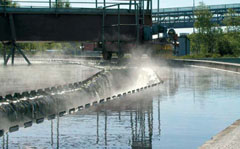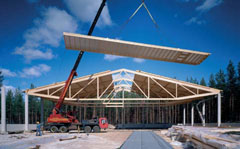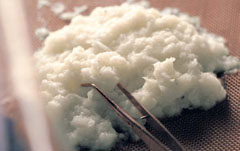As a result of declining oil resources and threat for climate change, energy questions will have a more significant role in the process development of the forest industry, where a lot of energy is both consumed and produced.
Wood can be used for producing a great variation of final products such as paper, board, veneer, timber and fuel. In addition, different by-products are obtained from manufacturing processes. Depending on the process, typical by-products are black liquor, tall oil, sawdust, bark etc. By-products can be further used as raw material for other products (e.g. sawdust for manufacturing of plywood) or in energy generation. If the by-product flow cannot be further utilised, it must be considered as waste.
The aim of this package is to evaluate influences and possible changes on the mill's energy system (generation, consumption, recovery) resulting from the development of new manufacturing technologies and other drivers (e.g. climate change, emission trade, traffic fuels). In other research packages , new pulping technologies, other fiber-based materilals than wood, and new furnishes consisting of fibrils and fillers are studied. Implementation of these technolofies may have considerable effects on the energy system compared to present system. For example, replacement of kraft process with other processes would have a direct influence on recovery cycle and recovery boiler and thereby energy generation. The use of agro fibers may decrease biofuel flow to the boiler as the bark flow diminishes. A special attention must be paid to energy issues already in the early phase of the process development.
The emission trade, and declining oil resources may affect the existing energy systems, although the manufacturing technologies would not change. Examples of large contributors are gasification of biomass or black liquor for recausticizing plant or production of traffic fuels.
The research tasks in the consortium are (1) to evaluate the influence of new and modified concepts on heat and electricity generation, heat and electricity use, heat and fuel recovery and fuel alternatives in energy generation and mill processes, (2) to provide guidelines for process concept selection based on energy and mass balances, (3) to evaluate the technical potential of energy integration in new process concepts, (4) to propose additional fuel products and (5) to carry out energy economic evaluation.
Process integration Advanced wood processing solutions are functional and efficient as they fulfil multiple design and operability requirements. Process integration is a field of technologies that has been developed to serve this purpose. Process integration methods simultaneously with other process design tools are used to determine optimal process concepts.
Manufacturing processes utilise raw material, energy, water, and chemicals. Physical and chemical properties of those serve as a basis for developing the manufacturing process. These factors determine how the theoretical mass and energy minima can be achieved. In addition, the process and plant designer must take into account such aspects as environment, operability, flexibility, controllability etc.
Process integration is a field of methodologies that have been developed to design optimal process designs from the system's perspective. They can be used to evaluate the best performance of the process i.e. the potential for process integration. Usually, the potential is calculated in respect to some specific criteria e.g. energy. The methods for that include e.g. exergy analysis and pinch technique. Some methods are capable in considering several criteria simultaneously. An example of such method is mathematical programming. The benefit of the methods comes from their ability to calculate theoretical minimum usage for the specific criterion (criteria). The principles of process integration must be applied already at the conceptual design phase where the greatest potential for improvement exists.
Process design must satisfy multiple design perspectives. In addition to various design criteria there are various perspectives to consider. One is that a design must be satisfactory on all levels of process integration, from unit process level to total site level. E.g. in regard to energy and paper production, this means choosing a correct paper drying technology not only by satisfying the requirements of paper quality and runnability but also by assuring the optimal energy production and utilization on the plant scale. Each new process concept is a unique design case which efficiency must be evaluated from these perspectives.
The aim of this research package is to apply suitable process integration methods for analysing wood conversion processes from the perspective of energy, raw materials, and other performance criteria. The research tasks are (1) to simultaneous use process integration and design methods in process design and (2) to provide guidelines for preliminary process design for efficient use of raw materials (energy, furnishes, water, chemicals) by means of process integration methods. The guideline task will include steps of (a) selection of the methodology (e.g. pinch technique, exergy analysis), (b) evaluation of the benefits and limitations of the selected tools and methods and their possible further development, (c) determining the essential design and evaluation criteria from process integration point of view and (d) estimating the potential (theoretical, technical, economic) for integration in respect to chosen design criteria.
The approach is expected to lead towards optimal design satisfying multiple design perspectives and a new design approach in papermaking.
| 





